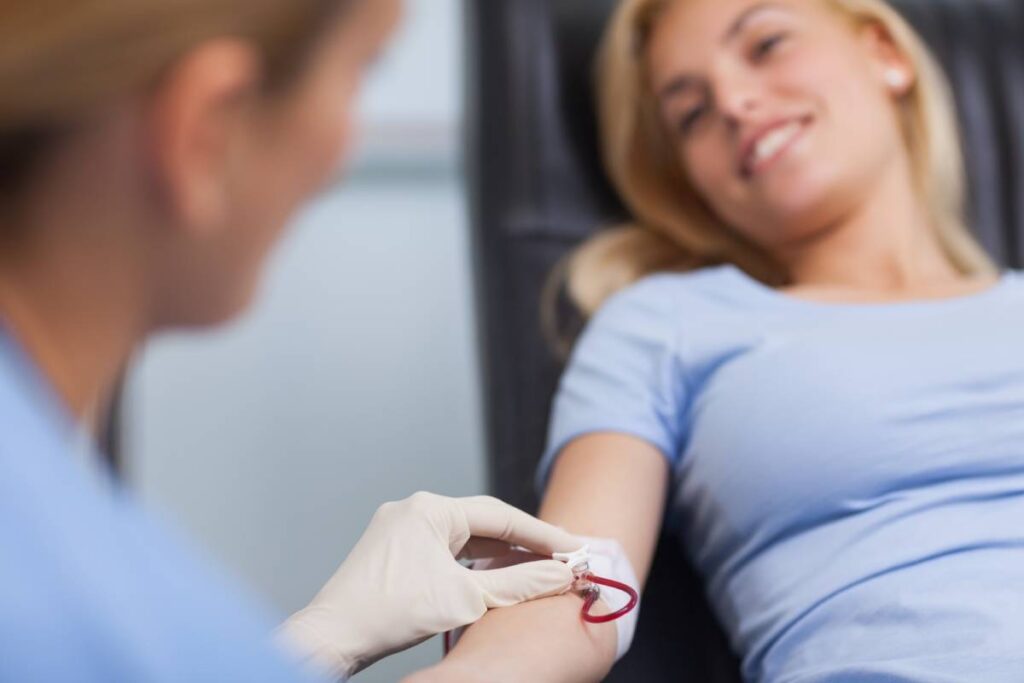Blood transfusions are life-saving medical procedures that involve transferring blood or blood products from one individual (donor) to another (recipient) 1. Whether it is carried out in order to replace blood lost during surgery, treat medical conditions like anemia or cancer, or manage emergencies such as trauma, blood must be prepared prior to a transfusion to ensure the safety and efficacy of the procedure.
The process of blood preparation begins with the selection of suitable donors. Donor screening protocols are in place to assess individuals’ eligibility based on factors such as age, health history, lifestyle behaviors, and recent travel. This screening seeks to minimize the risk of transmitting infectious diseases or other adverse reactions through transfusion 2,3.
Once a donor is considered eligible, blood collection occurs under sterile conditions. Blood can be obtained through whole blood donation or apheresis, a process that separates and collects specific blood components, such as red blood cells, platelets, or plasma, while returning the remaining components back to the donor. This allows for targeted collection based on patient needs and can reduce the impact of the donation on the donor.
Following blood collection, the donated blood is first prepared by separating it into its individual components for specific transfusion purposes: red blood cells, platelets, plasma, and sometimes cryoprecipitate or specific clotting factors 4. This step enables healthcare providers to customize transfusions according to different patients’ requirements and more efficiently use resources.
Ensuring the safety of blood products is critical. Therefore, donated blood undergoes a series of rigorous tests and screenings to detect infectious agents, including human immunodeficiency virus (HIV), hepatitis B and C viruses, syphilis, and West Nile virus. Blood is also screened for blood group antigens to match donors and recipients to minimize the risk of hemolytic transfusion reactions 2,3.
Once tested and prepared, blood components are stored under controlled conditions in order to maintain their viability and efficacy until needed for transfusion. Red blood cells are typically stored in refrigerated conditions, platelets at room temperature with constant agitation to prevent clot formation, and plasma at freezing temperatures to preserve clotting factors.
Prior to transfusion, compatibility testing is typically conducted to ensure that the donor blood is compatible with the recipient’s blood type and to detect any potential antibodies that could lead to adverse reactions. This involves cross-matching donor blood with recipient serum to identify any incompatible reactions 1,5.
Prior to administration, healthcare providers perform a final verification to confirm the correct blood product, patient identity, and compatibility. This step minimizes the risk of transfusion errors and ensures patient safety 6.
Blood must be meticulously prepared prior to a transfusion to ensure the safety, efficacy, and compatibility of blood products. From donor screening and blood collection to testing, processing, and compatibility assessment, each step is essential in safeguarding patient health. By adhering to stringent protocols and quality standards, healthcare providers can confidently administer transfusions knowing that patients receive the lifesaving care they need while minimizing risks and complications.
References
1. Blood Transfusion – StatPearls – NCBI Bookshelf. Available at: https://www.ncbi.nlm.nih.gov/books/NBK499824/. (Accessed: 12th February 2024)
2. Donor Safety, Screening and Testing. Available at: https://www.aabb.org/regulatory-and-advocacy/regulatory-affairs/regulatory-for-blood/donor-safety-screening-and-testing. (Accessed: 12th February 2024)
3. Blood safety and availability. Available at: https://www.who.int/news-room/fact-sheets/detail/blood-safety-and-availability. (Accessed: 12th February 2024)
4. Blood transfusion – Mayo Clinic. Available at: https://www.mayoclinic.org/tests-procedures/blood-transfusion/about/pac-20385168. (Accessed: 12th February 2024)
5. Blood Transfusion Procedure | Blood Transfusion Side Effects | American Cancer Society. Available at: https://www.cancer.org/cancer/managing-cancer/treatment-types/blood-transfusion-and-donation/how-blood-transfusions-are-done.html. (Accessed: 12th February 2024)
6. Safe transfusion – right blood, right patient, right time and right place. Available at: https://www.transfusionguidelines.org/transfusion-handbook/4-safe-transfusion-right-blood-right-patient-right-time-and-right-place. (Accessed: 12th February 2024)
